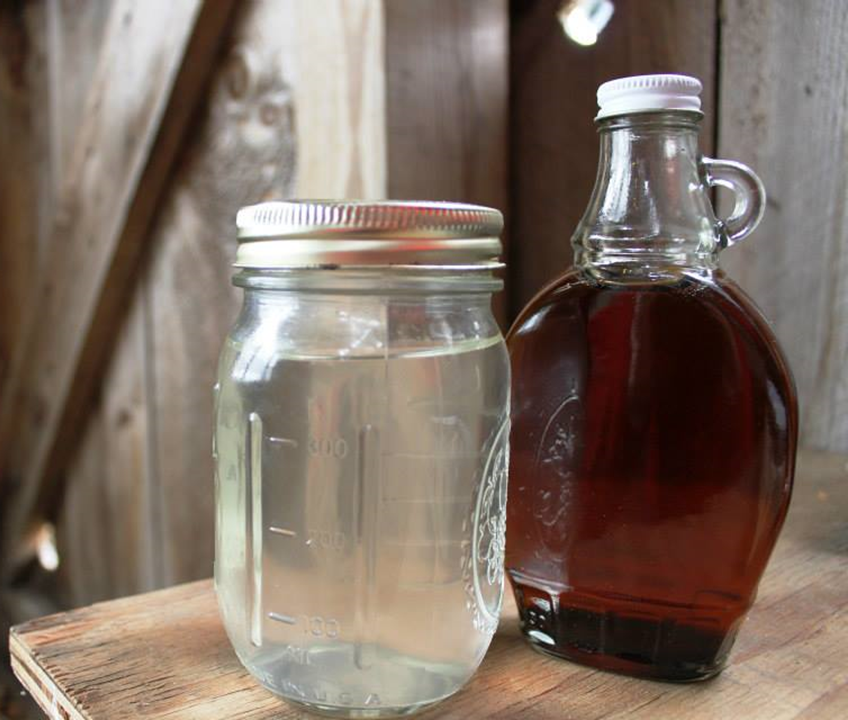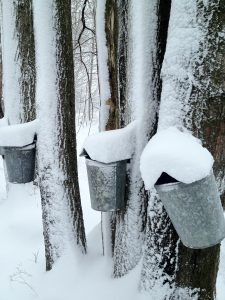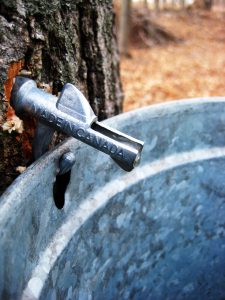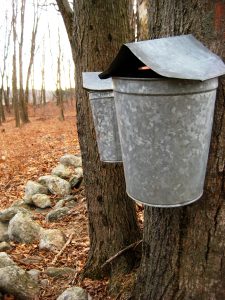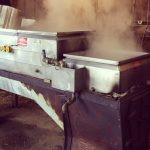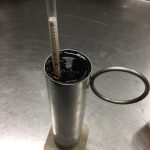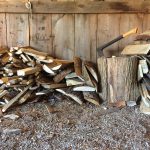
With the availability of year-round maple syrup (because it stores so well), it’s easy to forget that there is actually only a small window, within a small region of the world, when and where maple syrup can be made.
We are lucky in the Seacoast that we have the right combination of weather (freeze/thaw) and tree species (sugar maples) that we get to be part of that small maple sugaring region which ranges from Pennsylvania to Canada.
In honor of all the work maple producers are doing this time of year so we can enjoy the sweets of their labor, here’s a list of some of our favorite maple facts to savor this season:
- Maple syrup comes primarily from sugar maple trees, but you can tap other kinds of maples as well (red, silver, etc.)–they just have a lower sugar content in their sap and so are less efficient to produce.
- Maple sugaring season occurs when temperatures fall below freezing at night and rise to above freezing during the day. This usually happens in late winter/early spring in New Hampshire, lasting for about four-eight weeks.
- The freeze/thaw cycle causes the tree to begin to “wake up” from winter and prepare for spring as sap begins moving in the sapwood and pressure builds up in the tree.
- Taps, also called spiles, are drilled 3-inches into trees that are at least 10-inches in diameter (about a 40-year old tree). You place a tap for every 10-inches of girth–so a 40” tree can sustain 4 taps.
- A tree only gives about 10% of its sap and while the hole does create a wound, the health of the tree is not endangered and the holes close up and heal after the sugaring season.
- Buckets or tubing are the main methods of sap collection, though there are some new technologies out there like vacuum tubing.
- Most large scale producers primarily use tubing, a gravity fed system that delivers sap to one central holding tank, though many use buckets in addition.
- The amount that sap runs on any given day depends on the weather, but a two-gallon bucket can fill up overnight in the right conditions.
Sap looks like water and is, in fact, 98% water and only 2% sugar.
- The sap is boiled in an evaporator, often on wood fired, though hoods, pre-heating tubing systems, and reverse osmosis (R.O. in the sugaring world) can all speed up the process.
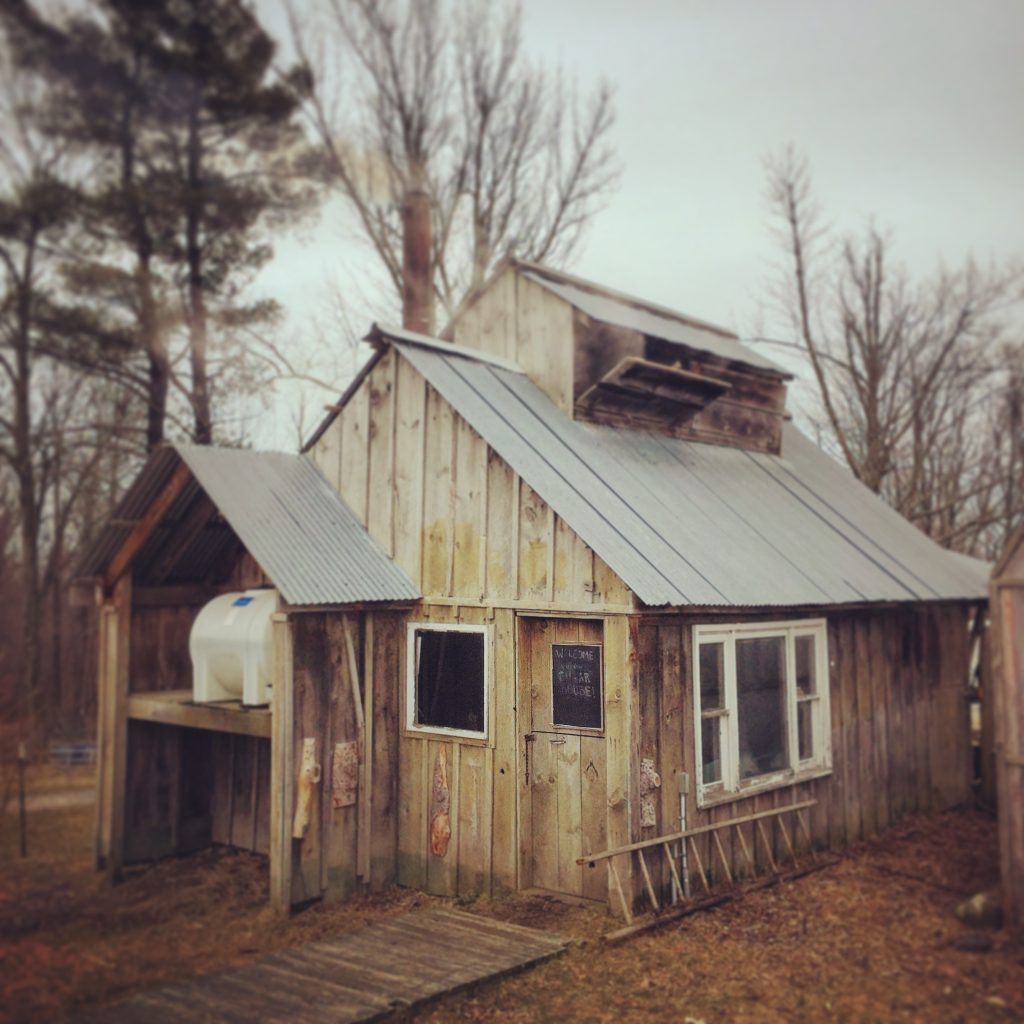
- It takes 40 gallons of sap to make one gallon of syrup.
- Sap has officially become syrup (solely through the process of the water evaporating and concentrating the sugars) when it reaches 66% sugar. The denser syrup is pushed to the front of the evaporator and poured off from a valve when it’s ready.
A maple producer discerns that sweet spot with a tool called a hydrometer that measures density in liquid. (It’s the same tool that winemakers and brewers use.)
- After the syrup is poured off from the evaporator, it is filtered, bottled, and graded. Grading is a system of identifying color, flavor profile, and other characteristics of maple syrup, and has nothing to do with the quality of it.
- There used to be “Grade B” maple syrup, but now it is called “Grade A: Dark Amber.” This grade is often the personal favorite of most maple syrup producers because it has the richest maple flavor.
- Maple sugaring was invented by the Indigenous Peoples of North America. Rocks were heated in a fire and then placed into hollowed logs to remove the steam.
- Maple syrup is delicious in a variety of uses, including the gold standard over pancakes, as well as in coffee or tea, over ice cream, and as a glaze over meat or root vegetables.
To substitute sugar in almost any recipe, use a 1:1 ratio and decrease the remaining recipe liquid by 3-4T.
- You can locate maple syrup producers and sugar houses via Seacoast Harvest, NH Maple Producers Association, or Maine Maple Producers. Farmers’ Markets nearly always have a maple syrup producer present as well!
* * *
Save the dates!
New Hampshire Maple Weekend: March 19 &20
Maine Maple Sunday: March 27, 2022 (always the fourth Sunday in March)\
Coming soon!
(To our blog and/or social media channels)
More sugaring facts
Interviews with maple producers in York, Stafford, and Rockingham counties
Recipes for cooking with maple syrup
